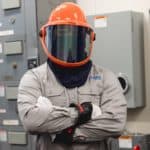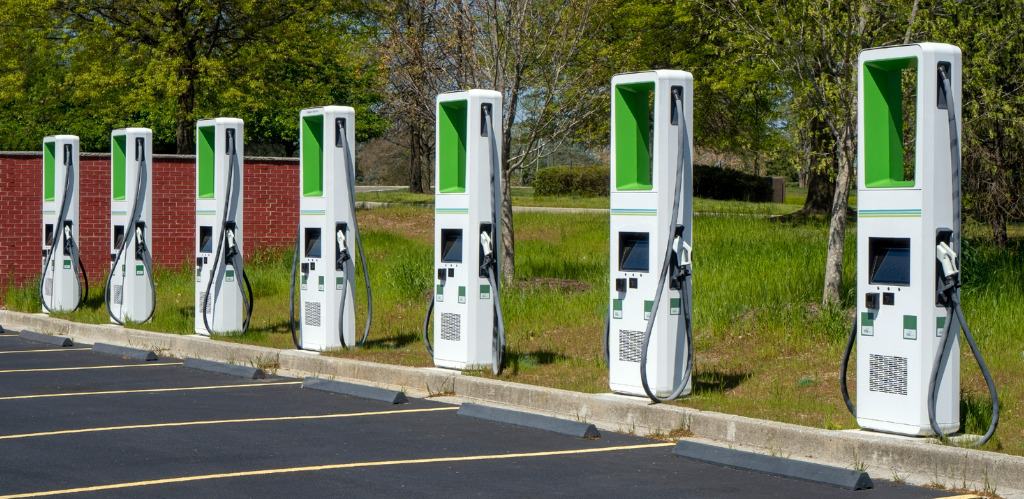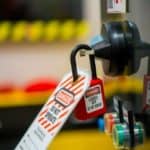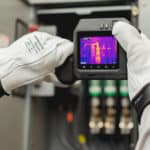Knowing the qualifications, reputation, and experience of the outside vendor or individual who performs the DHA is essential.
The Dust Hazards Analysis (DHA) was recently created to identify and combat the potential hazards of combustible dust and particulate solids. For a DHA to be effective, it must analyze all possible fire, deflagration, and explosion hazards related to the affected process equipment and building compartments.
Although all of the NFPA combustible dust standards now retroactively require a DHA to be performed, the importance of a DHA goes far beyond just a requirement. When executed correctly, a DHA thoroughly identifies and assesses complex combustible dust hazards and provides specific techniques to mitigate these hazards. Unfortunately, these severe hazards are frequently misidentified or ignored because unqualified individuals perform many DHAs.
The individual performing a Dust Hazard Analysis has the most significant effect on the quality of the DHA and the safety of any employees affected by these hazards.
However, what constitutes a qualified individual is one of the most confusing and underestimated aspects of a DHA.
A Flawed Definition
NFPA 652 and all industry- or commodity-specific NFPA standards require any DHA to be performed or led by a qualified person:
NFPA 652-2019 defines a qualified person as a “person who, by possession of a recognized degree, certificate, professional standing, or skill, and who, by knowledge, training, and experience, has demonstrated the ability to deal with problems related to the subject matter, the work, or the project.”
Besides this definition, Detesheds little light on what qualifications are genuinely required to perform or lead a Dust Hazard Analysis.
The confusion caused by the simplicity of this definition is overshadowed by its inaccuracies. There are no specific degrees or certifications one can obtain to demonstrate knowledge in assessing and mitigating various combustible dust hazards. An advanced degree, license, or certificate (e.g., PE, CIH, CSP, CFPS, etc.) alone does not automatically qualify an individual to perform or lead a DHA. Despite assertions to the contrary, there is also no single training course or class that an individual can take to become qualified to perform or lead a DHA instantly.
Ultimately, the origin of this definition causes these inaccuracies. Everyone assumes the description for a qualified person was created during the development of NFPA 652. In fact, NFPA 652 references this definition from NFPA 1451, a standard designed to outline the development of a fire and emergency service organization (FESO) vehicle operations training program. No one would conclude that the qualifications for performing driver training are synonymous with performing a DHA.
Using the exact definition across multiple standards reduces the importance of the term itself and, more importantly, implies that the required qualifications are trivial and meaningless.
While NFPA 652 defines the essence of being qualified, what makes an individual authorized to perform or lead a Dust Hazard Analysis is much more complex than the definition implies. Individuals often examine this flawed definition and incorrectly assess their abilities and expertise to perform or lead a DHA. These inexperienced and unqualified individuals perform DHAs that do not adequately identify and address all potential combustible dust hazards associated with process equipment and building compartments. The conclusions reached during these “DHAs” may create additional risks and provide a false sense of security that the fire, deflagration, or explosion hazards are effectively identified and mitigated when they are not.
Who is Qualified?
Analyzing potential combustible dust hazards in processes, equipment, and building compartments requires specialized expertise. The skills, knowledge, and other factors that comprise this expertise cannot be quickly learned in a short duration or by merely observing a DHA. So the real question is, who is qualified to perform or lead a Dust Hazard Analysis?
Unfortunately, the answer to this simple question is highly convoluted. NFPA 652 suggests that the qualified person who performs or leads the DHA should be “familiar with conducting a DHA and with the hazards of combustible dust.” However, this statement is overly broad and underestimates how much an individual’s expertise can affect the overall quality and outcome of a DHA.
Someone genuinely qualified to perform or lead a DHA simultaneously has intimate knowledge of a wide range of dust handling processes and specialized knowledge of the complex hazards associated with the various combustible dusts. This individual has performed all aspects of several DHAs associated with the affected industry or type of combustible dust and has honed their expertise by examining and mitigating various fire, deflagration, and explosion scenarios over several months or years.
The rarity of individuals who possess these qualifications cannot be understated. Many facilities assume that OSHA and other Authorities Having Jurisdiction (AHJs) possess these qualifications to their detriment. AHJs often walk by numerous combustible dust hazards, many of which are in plain sight, because they lack the knowledge and due diligence to identify them. This leads to statements like “OSHA never cited me” or “our insurance never said anything.” Believing these statements and trusting unqualified AHJs can downgrade the existence and significance of the serious hazards posed by combustible dust, exacerbate these hazards, and potentially cause an incident.
When to Use Outside Resources
Confidence in one’s ability to assess and mitigate safety and health hazards is necessary for an individual tasked with reducing risk. However, confidence alone is neither a justification nor a qualification for evaluating the serious hazards of combustible dust. It is incumbent on the individuals employed at the facilities to fully acknowledge when they are not qualified by education or experience to undertake a Dust Hazard Analysis. Failure to do so could cause serious fire and explosion hazards to be misidentified, unmitigated, or, worse, both.
Individuals who question or debate their qualifications are not qualified to perform or lead a DHA. Recognizing the limitations of one’s ability is a mark of professionalism, underscored in the Code of Ethics of many professional certifying organizations. This must not be dismissed when factors such as a need to demonstrate individual value to the organization, reservations about outside entities (third parties), and overconfidence influence decision-making.
Evaluating combustible dust hazards and conducting a DHA is a resource-intensive process. When attempted in-house, a DHA redirects facility personnel from running the business for several weeks, resulting in frustration and acknowledgment that outside resources are required to address combustible dust hazards adequately.
Once facilities make this fateful decision, they must turn to consultants, engineers, and other outside entities to perform the DHA. While it seems like this may alleviate the problem, the combustible dust expertise advertised by many of these external entities is frequently comprised of mistruths and inaccuracies. The worst mistake a facility can make is trusting this unverified “expertise” and assuming all DHAs are created equal.
Cost vs. Qualifications
What is the value of a comprehensive and practical Dust Hazard Analysis? Does the value rely on its cost or its content, and what affects the price and range?
The answers to these questions are dependent on the qualifications of the individual who performs the DHA. Cost is the most misused and least understood deciding factor for undertaking a DHA and indirectly evaluating an individual’s qualifications.
While most facilities understand the requirement to perform a DHA, they misunderstand the complexities of an effective DHA. These misunderstandings carry over to the purchasing decision, causing many facilities to underestimate what they are paying for in terms of safety and quality.
In this case, cost deters qualified individuals from performing DHAs. Many facilities assume all DHAs are created equal and believe they are comparing “apples to apples” regarding individual qualifications and other aspects of the DHA. This only perpetuates the myth that the cost of a DHA and an individual’s qualifications are unrelated. The adage “you get what you pay for” could never be more valid because the enormous influence on the quality and outcome of a DHA is the individual performing the Dust Hazard Analysis.
Making purchasing decisions based on the cost of the initial analysis without considering the individual’s qualifications often produces the opposite cost/benefit outcome.
Determining Qualifications
Knowing the qualifications, reputation, and experience of the outside vendor or individual who performs the DHA is essential. Although determining an individual’s qualifications is relatively simple, it is frequently not performed and taken for granted. Often, facilities improperly rely on an individual’s word or reputation. Relying on this unverified information is dangerous and circumvents the necessity of a qualified person.
Before performing a DHA, the facility should establish a system to verify whoever will perform or lead the DHA. Currently, NFPA 652 and all industry- or commodity-specific NFPA standards are silent on how this determination should be made.
However, thorough vetting of individuals or vendors offering to perform DHAs should include the following information submittals:
- Verify employment
- Obtain documentation of the individual’s job title, responsibilities, length of employment, and other pertinent information
While this may seem arbitrary, many outside entities will contract the DHA to an unvetted third-party consultant and present that their company performed the Dust Hazard Analysis. Many of these third-party consultants are unqualified to perform DHAs and inconsistently assess and document potential combustible dust hazards.
Check documentation – Obtain the resume and other applicable information (e.g., published articles, copies of certifications, etc.) to gauge the individual’s specific activities, accomplishments, and experience that qualifies him to perform a comprehensive and accurate DHA. All of this information should be verified because individuals frequently misstate their experiences and achievements.
Establish the plan – Understand the individual’s actions while conducting the DHA. The process equipment analysis, fire and explosion hazard scenario identification, ignition source identification, inspection and maintenance deficiencies, housekeeping effectiveness, and operating procedures are some but not all of the items that should be examined within the DHA.
Contact references – Obtain and contact several references, preferably at least one in a similar industry, to shed light on how the individual previously assessed and mitigated combustible dust hazards and the overall structure and quality of the DHA. At a minimum, at least two references should be contacted.
Obtain a sample DHA report – Obtain and review one or more reports from previous DHAs performed or led by the selected entity or individual to assess how the information gathered during the DHA will be presented. The thoroughness and quality of the DHA and the effectiveness of the hazard mitigation strategies should also be compared with competing entities.
The above information is required to perform a cost-benefit analysis and decide which individual has the qualifications to perform a DHA. Without this information, there is no way to assess an individual’s experience, reputation, or qualifications to perform the complex analysis necessary to mitigate combustible dust hazards. Failure to provide any of the above information should be taken as a definitive sign to begin to question the individual’s expertise and experience in assessing and mitigating combustible dust hazards.
Conclusion
The individual selected to perform or lead the DHA must be experienced with the process equipment affected by combustible dust hazards. That person must understand the intent of the numerous combustible dust standards and recognize solutions that fit the facility’s needs. This expertise and experience that comprise an individual’s qualifications are gained from years of work assessing and mitigating distinct hazards and are not achieved by simply reading or studying standards.
What constitutes a qualified person is, at best, misunderstood and, at worst, ignored. This lack of understanding and the scarcity of talented individuals introduces a significant bias in deciding who will perform the DHA. Thus, many facilities forgo the proper research and instead rely on blind faith when evaluating and choosing a qualified person for the Dust Hazard Analysis. Unfortunately, many unqualified individuals take advantage of this misplaced trust. It is vital to remember that unqualified individuals often cannot or do not wish to have their qualifications questioned. However, no one who performs any aspects of a DHA should consider himself above being evaluated.
Employee safety should always be the primary focus of any DHA. However, safety often gets lost when cost and other factors are added to the decision-making process. Cost should never be used as the sole factor in selecting an individual to perform a DHA. Instead, one should focus on the totality of expertise and the numerous benefits that an effective DHA can provide.
When executed correctly by a qualified individual, the benefits far outweigh the costs of a DHA. However, this is only possible if the facility takes the necessary steps to verify that the individual possesses the required qualifications to perform the DHA.
SEAM Group offers two levels of dust hazard analysis and testing services depending on your current situation and overall dust mitigation needs: Combustible Dust Testing and Dust Hazard Analysis. Learn more about the combustible dust solutions we have to offer.





